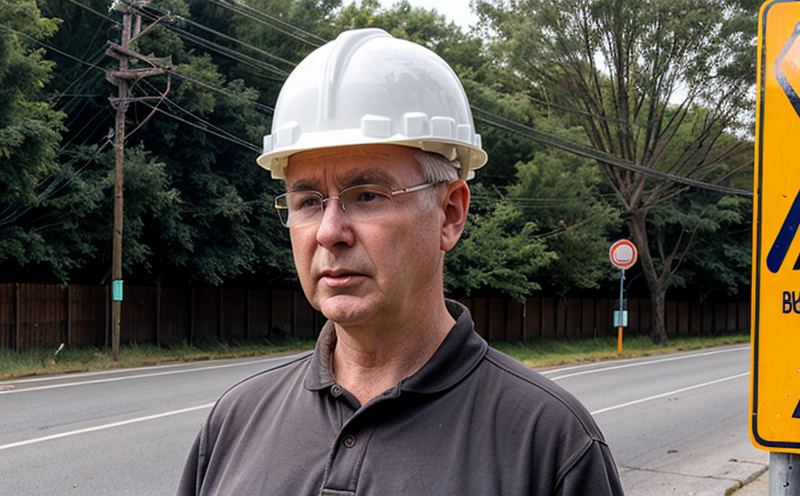ISO 6395 Measurement of Earth-Moving Machinery Noise in Community
The ISO 6395 standard is specifically designed to measure noise emissions from earth-moving machinery in community environments. This test ensures that the operational noise levels of such equipment are within acceptable limits, thereby minimizing disruption and potential harm to nearby communities.
Earth-moving machinery, including excavators, bulldozers, and backhoes, plays a crucial role in construction, mining, and infrastructure projects. However, these machines generate significant noise during operation, which can have adverse effects on the surrounding environment and human health if not managed properly. The ISO 6395 standard provides a standardized method to quantify this noise, allowing for consistent measurement across different types of machinery and environments.
The test procedure involves placing microphones in strategic locations around the machine at various distances. Noise levels are recorded under typical operating conditions using high-resolution sound level meters. This data is then analyzed according to ISO 6395 specifications to determine compliance with community noise limits.
Compliance with this standard is not only a requirement for environmental protection but also a legal obligation in many jurisdictions worldwide. By adhering to the guidelines set forth by ISO 6395, manufacturers and operators can ensure that their equipment meets regulatory standards, thereby avoiding potential fines or operational disruptions.
The importance of this test cannot be overstated, especially given the increasing awareness of environmental issues and the health impacts of excessive noise exposure. By conducting regular ISO 6395 tests, companies demonstrate a commitment to sustainability and community well-being. This proactive approach can enhance their reputation and build trust with local communities.
Furthermore, compliance with this standard can lead to operational improvements. For instance, by identifying noise hotspots or inefficiencies in the machinery design, manufacturers can implement targeted modifications that reduce noise levels without compromising performance. This not only benefits the environment but also enhances worker safety by reducing the risk of hearing damage.
The ISO 6395 standard is part of a broader suite of international standards aimed at minimizing environmental impact and promoting sustainable practices in various industries. It aligns with other relevant standards such as ISO 14001 for environmental management systems and ISO 2631-1:2012 for evaluation of human exposure to whole-body vibration.
Conducting an ISO 6395 test involves several key steps. First, the test setup must be conducted in a controlled environment that simulates typical operational conditions as closely as possible. This includes selecting appropriate microphone locations and ensuring that all equipment is functioning correctly. Once the initial setup is complete, the machinery is operated under standard operating procedures while noise levels are continuously monitored.
After data collection, it is essential to analyze the results according to ISO 6395 criteria. This involves comparing measured values against specified limits for different types of earth-moving equipment and community environments. If compliance cannot be achieved, further analysis may reveal specific areas where improvements can be made. These insights are invaluable for both ongoing operations and future design iterations.
The benefits of adhering to ISO 6395 extend beyond mere compliance; they encompass broader sustainability goals. By reducing noise pollution, companies contribute positively to public health and quality of life in affected communities. This aligns with global trends towards greener practices and responsible corporate citizenship.
Additionally, the data generated from these tests provides valuable insights into machinery performance under real-world conditions. Manufacturers can use this information to refine designs, optimize operations, and enhance overall efficiency while maintaining environmental responsibility.
Why Choose This Test
Selecting an ISO 6395 test for measuring earth-moving machinery noise is crucial for several reasons:
- Legal Compliance: Ensures adherence to local and international regulations regarding environmental protection.
- Sustainable Practice: Reduces noise pollution, contributing positively to public health and quality of life in affected communities.
- Operational Efficiency: Identifies areas for improvement in machinery design and operation, leading to enhanced performance.
- Reputation Enhancement: Demonstrates a commitment to sustainability and community well-being, enhancing corporate image.
Choosing this test also offers peace of mind knowing that your operations meet the highest industry standards. It provides reliable data that can be used for ongoing improvements and strategic planning.
Moreover, by opting for an ISO 6395 test, you contribute to a global effort towards sustainable practices. This aligns with broader trends in environmental responsibility and responsible corporate citizenship.
Environmental and Sustainability Contributions
- Emission Reduction: By minimizing noise pollution, ISO 6395 tests help reduce the overall impact on local ecosystems.
- Safety Improvement: Lower noise levels contribute to better working conditions for operators and nearby residents.
- Health Impact Mitigation: Reduced exposure to excessive noise helps prevent hearing damage and other health issues.
- Economic Benefits: Enhanced machinery performance leads to cost savings through improved efficiency and reduced maintenance costs.
The ISO 6395 test plays a vital role in promoting sustainable practices within the construction and mining industries. It supports global efforts towards reducing environmental impact while ensuring safe, efficient operations.
Use Cases and Application Examples
The ISO 6395 standard has diverse applications across various sectors:
- Construction Projects: Ensures compliance with local noise regulations during construction activities.
- Mining Operations: Helps maintain safe working conditions for miners and nearby communities.
- Infrastructure Development: Supports sustainable urban planning by minimizing environmental impact.
In practice, the test is conducted before major earth-moving projects to establish a baseline of noise levels. This information is crucial for predicting potential impacts on surrounding areas and implementing mitigation strategies if necessary.
For ongoing operations, regular ISO 6395 tests provide continuous monitoring of noise emissions. Any deviations from established limits can prompt timely interventions, ensuring sustained compliance.





